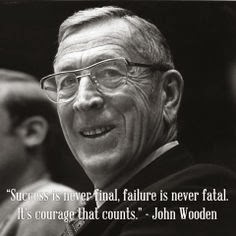Today I continue my retrospective on the Arkansas Razorbacks' 1994 national basketball championship run.
Twenty years ago today, the Razorbacks defeated Michigan in the Elite Eight, 76–68, earning their third Final Four berth in my lifetime.
There is one thing you have to understand about the Razorbacks' relationship with Dallas' Reunion Arena, where the Midwest Regional semifinals and final were played in 1994. It was their home away from home.
Before they left the Southwest Conference, the Razorbacks played in Reunion Arena several times a year — the annual Southwest Conference tournament was played in Reunion Arena, and I think the Razorbacks used to play SMU there, too — and they won with such regularity there that it had come to be known among Arkansas fans as Barnhill South. Barnhill, you see, had been the name of the basketball arena on the Arkansas campus for four decades; in fact, the Hogs moved in to their new home, Bud Walton Arena, earlier in that 1993–94 season.
Coming into their game with the Wolverines 20 years ago today, the Razorbacks had won 12 straight games in Reunion Arena. They seldom played in Dallas after they moved to the Southeastern Conference, but they had dominated Reunion Arena when they were in the SWC — going back to their last loss in Dallas, to Baylor in the 1988 SWC Tournament.
In the NCAA Tournament, Reunion Arena was technically considered a neutral site, but, informally, it was regarded as a home court for Arkansas.
Dallas was within easy driving distance for most Arkansas fans, and the Razorbacks had a large, vocal fan presence that weekend. As I watched on TV, it didn't take much for me to imagine how loud the fans were with "Woo Pig Sooie!" rattling the rafters.
The Wolverines were nearly 1,000 miles from their campus. It might as well have been a home game for the Hogs.
Michigan had problems early. Junior Juwan Howard picked up two fouls in the first two minutes, and, thanks to the way that prevented him from being as aggressive as the Wolverines would have liked, the Razorbacks took a nine–point lead to the locker room, but they had to overcome an early deficit. They missed their first six shots, but a 17–0 first–half run propelled them to their lead.
In the second half, all the Razorbacks had to do was stay even with the Wolverines, and they would punch their ticket for the Final Four in Charlotte, N.C. They never looked back.
Howard was the leading scorer in the game with 30 points, connecting on nearly 65% of his attempts, but the Razorbacks had four starters in double figures.











